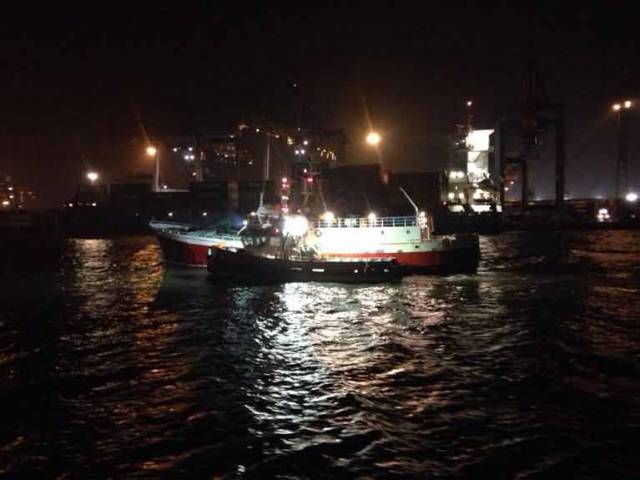Volunteer lifeboat crew with Donaghadee RNLI abandoned their Saturday evening to assist a 315 tonne Spanish fishing boat with 18 crew members onboard, which had a broken down engine, and bring it safety in Belfast Harbour.
Donaghadee RNLI all-weather lifeboat Saxon launched just after 8pm at the request Belfast coastguard. They made good speed toward the stricken vessel Tahume which was reported to be 2.5 nautical miles North East of the Mew Island. Despite a strong easterly wind force 5-7, the volunteer crew were able to establish a tow line at approximately 8.47pm.
Due to the size of the fishing boat and the sea conditions the decision was made that the lifeboat would tow the casualty to the safety of Belfast Harbour. Amid a 2-3 metre swell and with the flood tide against them, the initial progress was slow but once past the Mew Island and into Belfast Lough the lifeboat was able to make a steady speed of approx. 5.5 knots.
The lifeboat and pilot boat Michael Evans from Belfast Harbour met in Belfast Lough at the Fairway Buoy where a pilot went aboard the fishing vessel and once in the Victoria channel, an alongside tow was established with port tugboat Sally McLoughlin. The lifeboat was then able recover their towline and the tug safely berthed the fishing vessel.
Coxswain Philip McNamara, Donaghadee RNLI Lifeboat, commented afterward:
‘The crew were paged at 8.12 and we launched shortly after that, I can only thank them for their speedy response. It was a long evening with difficult enough conditions, but thanks to the ongoing training with the RNLI the team were able to secure the tow and we were delighted to bring the skipper of Tahume and her crew to the safety of Belfast Harbour. We wish her safe onward journey following repairs.’































































